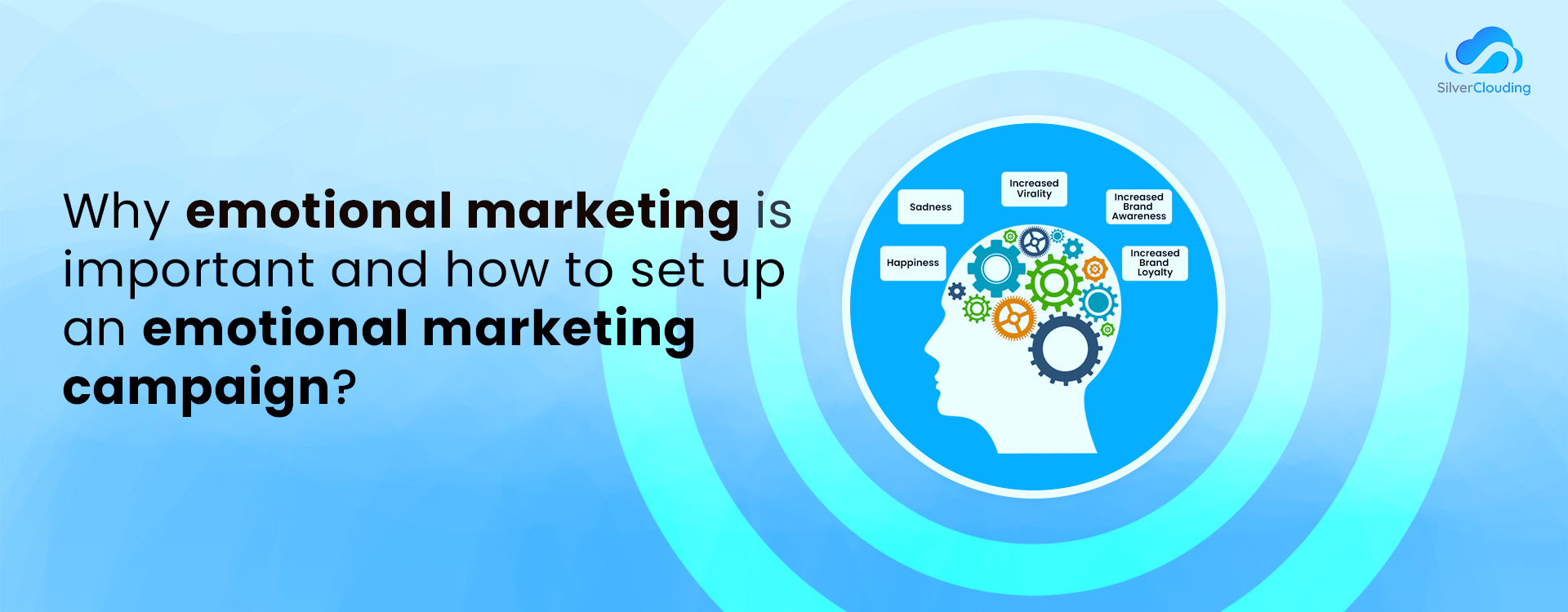Targeting the right audience & their emotions
Targeting the right audience is essential for effective marketing. It includes understanding the needs and emotions of potential customers, so you can engage them with the right message, product or service. By understanding their emotions, you can craft an advertising message that speaks to their wants and needs and encourages them to buy.
Consumer decisions are not only based on the usefulness of the product or service, but also on their emotional connection to it. Effective marketing requires understanding the right audience and their emotional triggers, so you can craft an advertising message that speaks to them and motivates them to purchase.
By understanding the needs and emotions of potential customers, you can create an effective marketing message that resonates with them and encourages them to take action. With the right message, product or service, you can reach the right audience and their emotions to promote your business.
What is Emotional Marketing?
Connecting with consumers and capturing their attention in an ever-increasingly saturated advertising market can be best achieved through emotional marketing.
This type of marketing goes beyond selling and evokes inspiration, encourages action, and allows you to be part of a discussion that goes far beyond your main product or business.
How to Create an Emotional Marketing Campaign
Start by conducting extensive psychological research on your group of customers. You must know their demographics and the things that they are looking for.
Doing the work upfront can result in the risk of either eliciting lots of unintentional feelings or none in the first place, and then becoming forgotten.
One of the most common mistakes marketers make when they attempt to develop content that resonates with their audience is to believe that all emotional reactions are identical and not the sloppy, difficult-to-predict range of reactions we experience in the real world.
A campaign that enthuses an audience in one area could cause another audience to feel targeted and judged. A commercial meant to be humorous could cause one audience to laugh out loud in laughter while prompting an immediate negative reaction from a different audience. Nike likely anticipated this would happen, but projected they’d gain. It’s up to you to make the same decisions.
In the end, in order to make the right decision for your business, emotional marketing research is dependent on understanding the issues, concerns and motivations of your target audience.
There are several ways to achieve this.
Keyword Research
One of the most effective methods to comprehend an audience is through keyword research. In short, knowing what your users are looking for online will give you great information about who they are as well as what they’re searching for on the internet.
Tools such as BuzzSumo, SEMrush, and Answer the public offer a wealth of options for basic and more advanced search engine research. They offer specific results for the most relevant keywords as well as related terms and news articles, as well as influencers along with sharing statistics that give you a greater understanding of where a brand or product fits into the current societal context.
Target Audience Research
Research on target audiences is a more complex process that typically involves creating buyer personas, which are fictional people you consider as representatives for your groups.
Tools such as Facebook’s Audience Management and SparkToro offer nuanced choices to limit a potential population based on basic demographics such as gender, age and behaviours, such as the websites they check out or the people who are their social networks’ followers.
This helps marketers zero on the interests and habits of the audience they want to reach. By understanding what people are already engaged with, it is clear what kind of emotional appeals with successful in attracting the attention of customers and earning them business.
This can help in two ways:
- Building a stronger personality for your audience.
Expand your view of what topics and feelings might be relevant to them.
In this scenario, there are a variety of brands in the food and beverage industry depicted. Maybe, if you’re a comics store you make an inventory of the top and worst junk food products and observe the emotions of your customers as they strongly agree or disagree.
As you will see, the more you understand your customers, the more you will be able to identify potential emotional issues that are related to the interests of your audience.
- Predicting the future by studying the Past
Although copying successful content that was able to reach your target audience isn’t a feasible method, it’s definitely instructive to look at what’s been successful before.
If other brands have had huge results with campaigns focused on nostalgia or the feeling of being together You can be sure that your target audience will react to campaigns that trigger the same emotions.
Many viewers may be most attracted by creating negative feelings, for example, a company that has an enviable social justice image making a campaign that highlights the problem of inequality at work.
Ideating for Emotional Marketing
When your emotional market research is completed now is the time to think about what you can do to add the most value for the most relevant topics you’ve discovered.
The two most common ways to achieve this in the field of content marketing are:
- Convert-optimized, on-site content.
- Link-building content that is off-site.
- On-site Resource Content creates an Emotional Identity
The content you provide on your website is the core of any SEO strategy. It provides plenty of opportunities for your company to connect with your customers emotionally but also provides a substantial chance of a conversion.
In presenting social impact as being completely integrated with purchasing, the brand appeals to its customers who are looking to make environmentally and socially conscious purchases. It also creates the highest likelihood of conversion.
What you should do is to be certain of the narrative of your brand. What are you seeking to accomplish or solve with its service or product?
And then, speak to the human emotions your audience is experiencing that go along with your goals.
Let’s sum up
Small, yet powerful strategies for psychological appeal can enable brands to communicate in the same language as their customers and give them the impression of their wants and expectations being understood ahead of time. If you look at “emotionally right” ads, the target audience will only have only one impression: “That’s just what I require!”
To turn on the appropriate triggers, you must:
- Perform frequent and thorough target audience research. Know what is important to them the most, what challenges they face in their everyday lives as well as how they come to decisions to take the actions they want to and the doubts and concerns they may are facing.
- Be sure to communicate with your customers with clarity and a concise manner. Be sure to only talk about things that are essential and beneficial to your customers.
- Make use of appropriate creative strategies and storytelling techniques. Your message should be engaging, concise and beneficial to your audience.
- Be attentive when making your posts more personal.
- If you are aware of the person you’re talking to electronically, it’s simpler to select effective methods to influence consumers using their feelings.





Why emotional marketing is important and How to...
[…] Connecting with consumers and capturing their attention in an ever-increasingly saturated advertising market can be best achieved through emotional marketing. This type of marketing goes beyond selling and evokes inspiration, encourages action, and allows you to be part of a discussion that goes far beyond your main product or business. […]